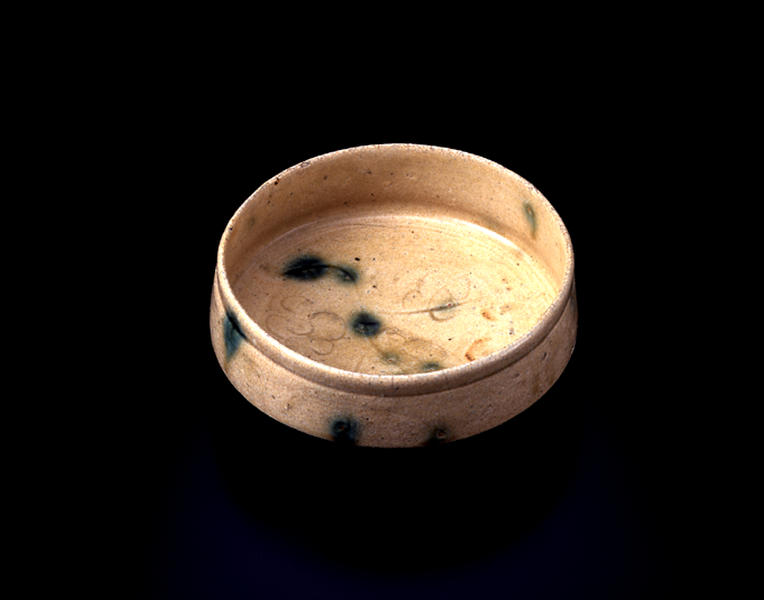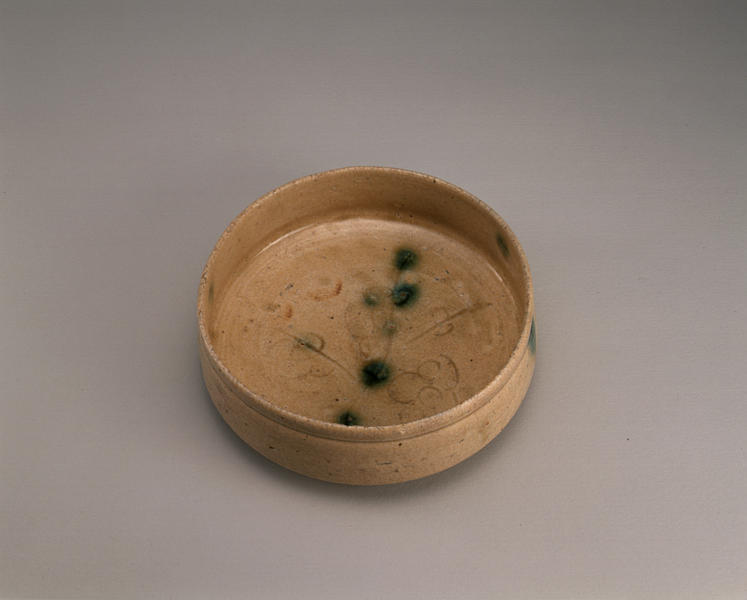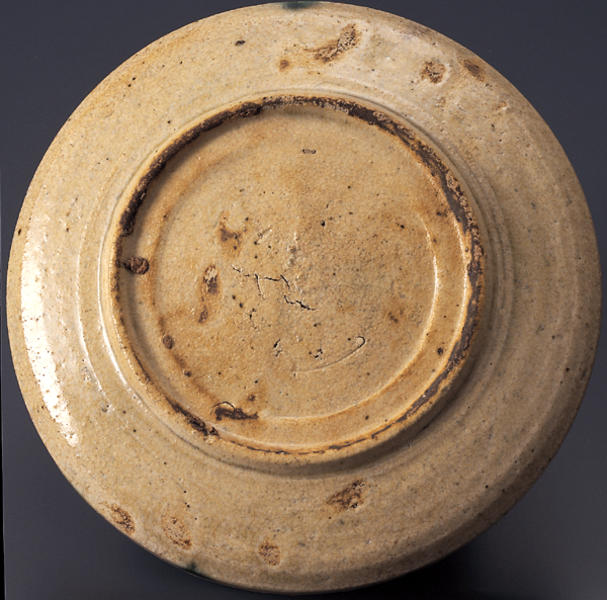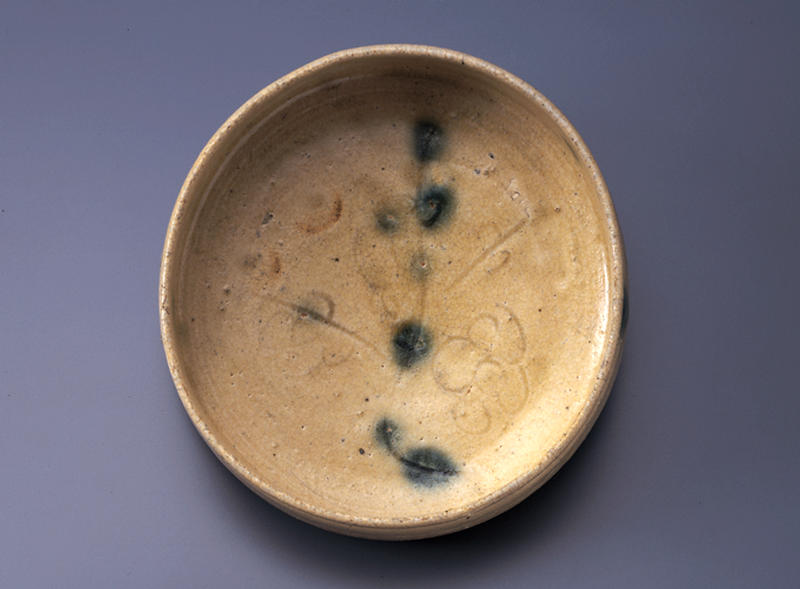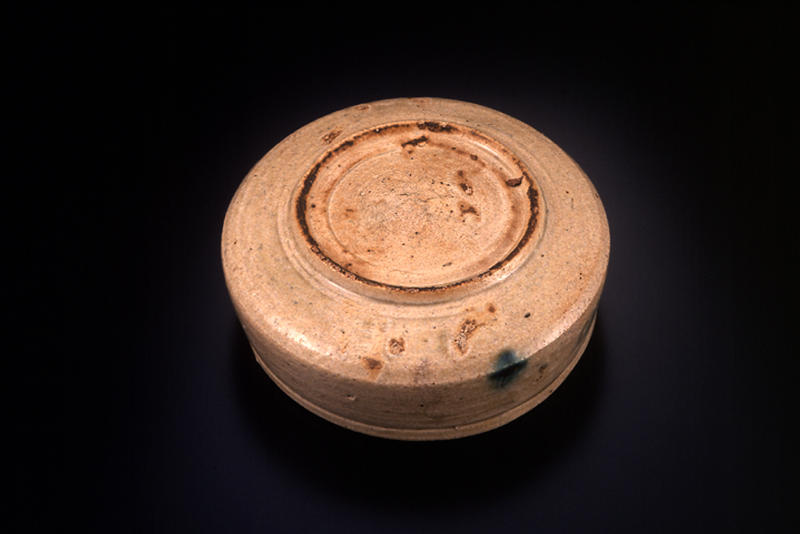Kizeto Dorabachi Bowl
- Mino kiln, Gifu pref.
- Momoyama period
- 16th century
- Mino ware
- H-5.6 D-15
Catalogue Entry
Momoyama period, 16th century
Kizeto ware
Height, 5.6cm; mouth diameter, 14.7cm
Kizeto ware bowls from the Momoyama period are radically different from the artfully designed Shino ware bowls and generally have unwarped vessel shapes. This flat bowl is a typical example of a Kizeto bowl, and the stepped edge to the rim of the mouth and slight puckering of the mouth of this wheel-thrown vessel are elements clearly based on a metal bowl form. The interior of the bowl has been spatula-carved with a blithely arrayed plum branch and flower motif, and after the entire bowl was covered with the yellow Kizeto glaze, it was touched with spots of copper and iron glaze.
One of the best aspects of a Kizeto ware vessel is its glaze condition. In the case of this bowl, the Kizeto yellow glaze has fired to a soft yellow with a slight whitish tinge, and the green copper sulfate glaze is also soft and has been fired to the ideal state for Kizeto ware. In one area, the copper sulfate appears on the opposite surface and thus is an example of what is called nuke tanpan. This phenomenon appears when the glaze is softly fired and is one of the special qualities of Kiseto wares. A low foot has been attached to the base, and the bottom edges of the foot and one section of the interior of the foot have proper scorched marks, koge. TA
